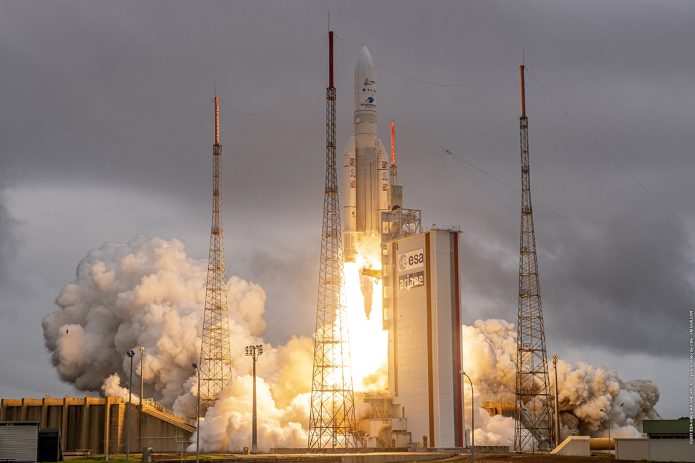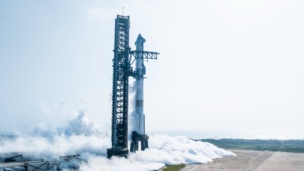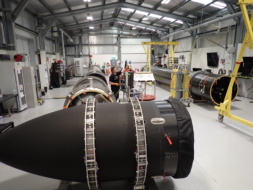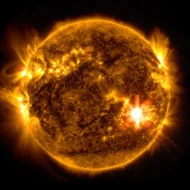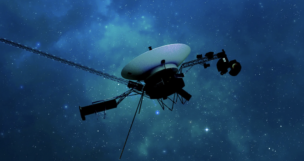Best Christmas Gift Ever?
If you’re an astronomer, the answer to that question is a resounding Yes.
ICYMI: The James Webb Telescope (JWST) blasted off on Christmas aboard an Ariane 5. As successor to Hubble and the most powerful space telescope ever built, JWST should significantly advance our understanding of the observable universe.
The $10B telescope is a joint effort between NASA, ESA, and Canada’s space agency—with the US footing most of the bill.
- NASA lists 306 JWST contributors, spanning industry, academia, and more. Northrop Grumman led assembly of the telescope.
- European scientists get a minimum of 15% of JWST’s total observing time. That’s a great deal for ESA, which kicked in ~$340M (300M Euro) to JWST.
And now, for the bells and whistles…
- Tools: The scientists and engineers who worked on JWST invented a number of new technologies, including new infrared detectors, sunshield materials, and cryogenic control systems.
- Bling: Composed of 18 now-famous gold-plated hexagons, JWST’s primary mirror is roughly 6x larger than that of Hubble.
- Eyes: JWST will predominantly rely on infrared observation, which can penetrate dust and other obstructions.
- Sunscreen: When deployed, JWST’s five-layer sunshield will be roughly the size of a tennis court. The telescope’s near-infrared equipment must be kept extra cool (-234°C).
- Clock: In a way, Webb is a time machine, as it will enable astronomers to look back more than 13.5B years to the “epoch of reionization,” when the first stars and galaxies were formed.
But…with a generational upgrade in astronomy/astrophysics gear comes a multitude of new risks. Webb is in the early innings of its “29 days on the edge,” a phase where everything needs to go right. And there’s plenty that could go wrong: JWST has 344 single-point failures.
There’s a lot riding on success. JWST was plagued by budget overruns (measured in billions of dollars) and decades of delays. Over the last 20 years, a third of NASA’s astrophysics budget has gone to JWST. For stargazers, NASA, and the scientific community, there is no Plan B.
Looking forward…After a month-long journey, Webb will settle into an L2 orbit. Its final parking spot is nearly 1M miles from Earth. We’ll keep you posted on its progress.
+ Want to go deeper? Visualize JWST’s origami-like unfurling and deployment stages via Reuters’s nifty graphic story. And follow JWST on Twitter for real-time mission updates.
